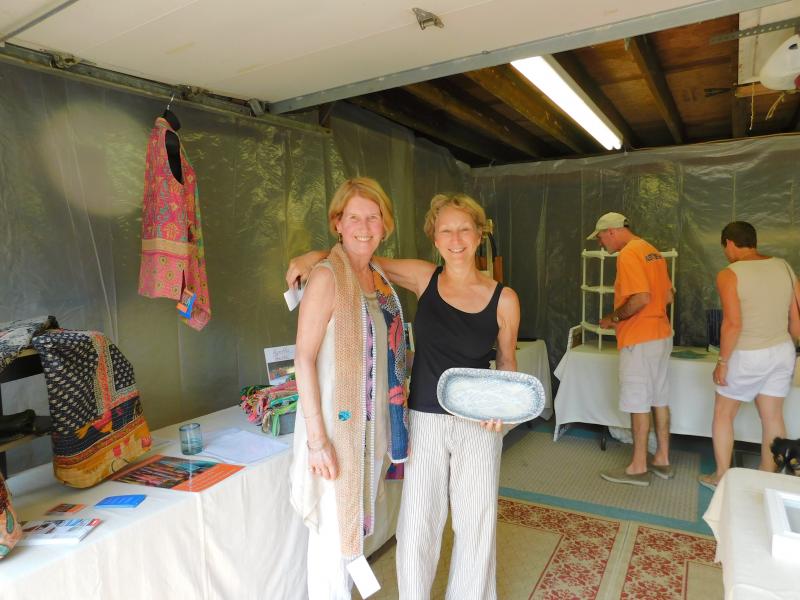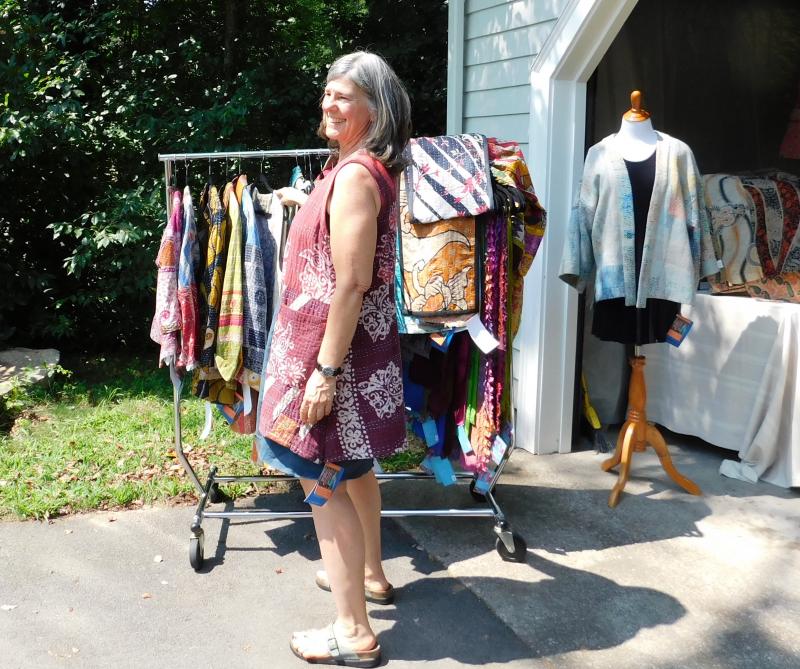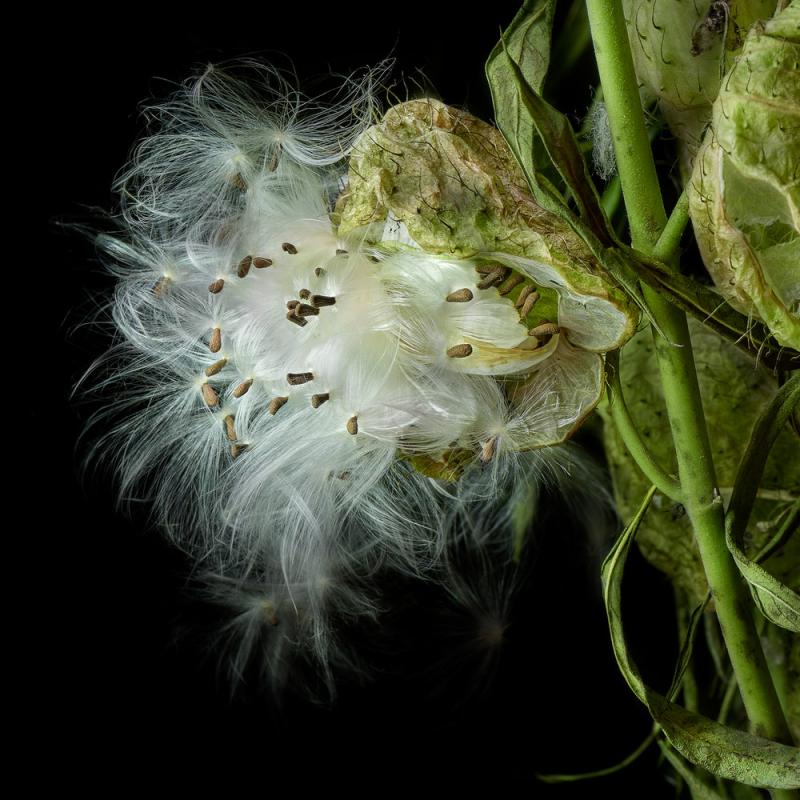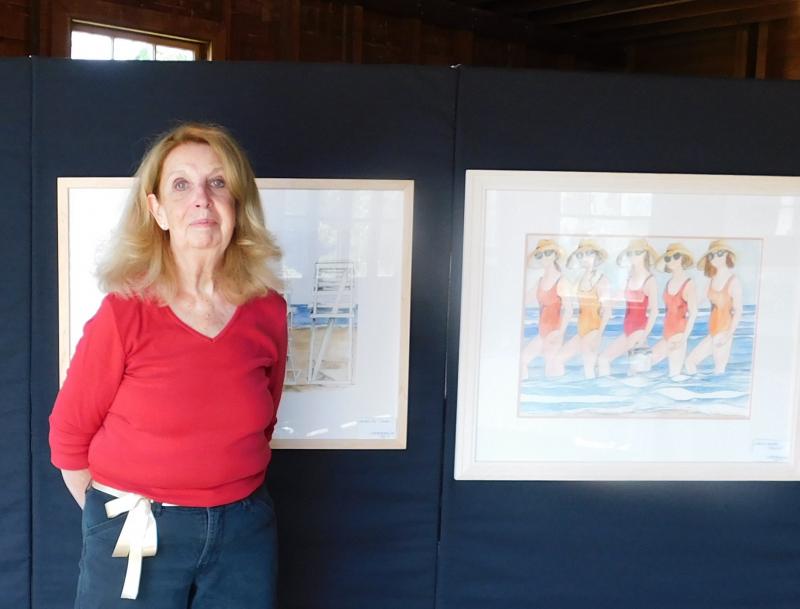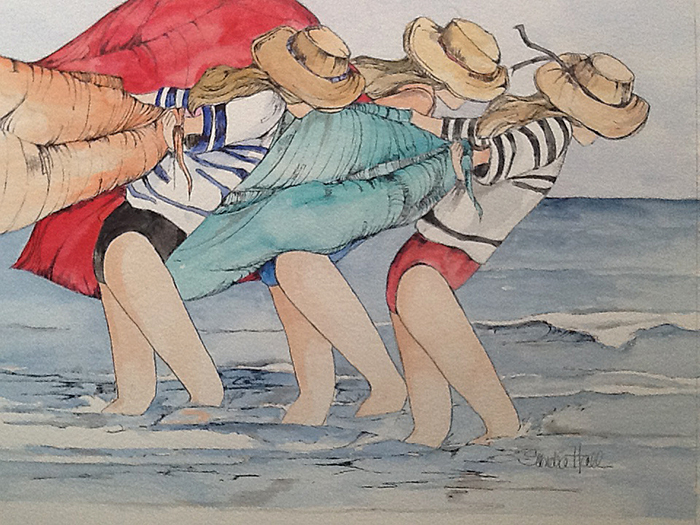Dive into local art at the Art Drive
Small orange roadsigns popped up overnight throughout Dartmouth, which directed art fans to more than 20 artists’ studios for the annual Art Drive juried open studio tour. Dartmouth Week stopped in to see several artists on the first day of the tour.
Barbara Purdy
Barbara Purdy is a fused glass artist, meaning that her work is done flat in a kiln, and then shaped
“I like microscopic photography because it gives me abstract images of nature,” Purdy said.
Those kinds of abstract images are inspiration for her glass work, which references coral reef forms, bone, the marshland, and other aspects of the natural world.
After selling her farm, she needed something to do, and made a mosaic. From there, she was hooked on glass.
“I just like glass,” Purdy said. “I like it as a medium. As opposed to painting, you can actively engage with it.”
She described how she can work and rework the glass: cutting an old piece into strips, recombining it into something new, and then warping that using a oversized dental pick-type tool to drag through the glass while it is hot in the kiln.
Elizabeth Howland
Elizabeth Howland makes one-of-a-kind clothing -- vests, jackets, scarves, and pouches -- out of Kantha cloth, which is made by women in India and Bangladesh by layering worn saris on top of each other and hand-stitching them together, most often with a simply running stitch.
“I just love the fabric because its so bright and happy, and it just fills me with smiles and energy,” said Howland.
Because the fabric has already been worn, it’s very soft, and grows softer with each wear. The stitching used to attach the saris together also gives the fabric a unique texture.
The pouches she has started to make use up all of her fabrics remnants — part of her ongoing commitment to use all her material with minimal waste.
Deb Ehrens
Deb Ehrens is a photographer who describes her process as “painterly.” She doesn’t just line up a shot and take a picture, but works carefully with light and composition, often in darkness with handheld lights.
“I see the universe in the patterns in what I find,” Ehrens said. “Most of this stuff has come from my garden or from friends’ gardens.”
She explained how a photograph of a dried hosta leaf could, if cropped, be mistaken for a satellite photo of a mountain range.
For one project, she explored moving water in Destruction Brook by creating compositions of layered natural materials in the water. Because she was interested in reflected light, she printed those works on aluminum due to its visual similarity to water.
Sandra Hall
Sandra Hall is a painter and printmaker who has been living in Dartmouth for the past 20 years, although her roots in the town go back to her college days at UMass Dartmouth, then known as Southeastern Massachusetts University.
She is the artist behind the Lloyd Center Clambake’s iconic illustrations, and was also an art teacher.
“I’m a beach girl,” she said. “It can be snowing like mad outside and I’m on the beach in my mind, in the studio. It keeps me going.”
”It’s all about sharing,” Hall said of her subject matter. “You can paint anything you want, but I know what I love. Over the last two years or so, I’ve really focused on the summer theme, the beach theme, and people love it.”
She published her first children’s book, Home is the Starting Place, in 2014, and has written and illustrated a second book, The Mouse in the Catboat, that will be published this fall.



